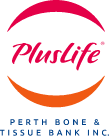A new era has begun for PlusLife, Western Australia’s only bone and tissue bank, with the official opening of its new $10 million new headquarters in Midland today.
The new facility was unveiled by Midland MLA Michelle Roberts this morning in a special ceremony involving recipients of bone and tissue donations, their relatives, donor families, medical stakeholders and PlusLife staff.
Mrs Roberts said the new facilities would allow the health service to grow its bone and tissue management operations and continue its vital work supporting the West Australian community.
“In the past 25 years, PlusLife has provided more than 18,000 grafts that have helped more than 10,000 patients, many of whom are children with bone cancer and spinal deformities,” she said.
Designed by award-winning architects Cameron Chisholm Nicol and built by Balcatta company PS Structures, the purpose-built facility includes two tissue processing cleanrooms, freezer storage, a tissue testing laboratory and a dedicated research laboratory.
PlusLife managing director Anne Cowie said the previous facilities, based in Nedlands, had become cramped and outdated, and in 2016, the State Government committed $10 million to build a new workspace for PlusLife.
“PlusLife has helped improve thousands of lives through the generous donations of Australian tissue,” Mrs Cowie said.
“This new building means we will be able to continue our important work managing bone and tissue donations in WA as we strive to meet growing demand for our services.
“We greatly appreciate the State Government’s support, which will ensure we can continue to provide a high quality service for future generations.”
PlusLife, which manages bone and tissue donations in WA, has two donor programs. Living patients having hip replacement surgery can donate the ball part of their hip, which is used commonly in a ground-up form for children with spinal deformities. And, like organ donation, bone, tendons and ligaments can be donated after death with consent from next-of-kin.
Grafts are used for patients undergoing life-changing operations, such as surgery to treat spinal deformities, complex joint surgery and treatments for patients with dental and facial bone loss. In many cases it has saved young adults the distress of a limb amputation.
Mrs Cowie said there was a need for greater community awareness about bone and tissue donation, which greatly improves outcomes for patients.
“While organ donation has a high community profile and is known as a life-saving gift, many people are not aware that tissue donation is actually possible,” Mrs Cowie said.
“The donation of tissue can have life-changing benefits for patients. One deceased tissue donor has the potential to improve the wellbeing, sight and mobility of up to 60 people.”
To register as a bone, tissue or organ donor, visit www.donorregister.gov.au or via Medicare online.



